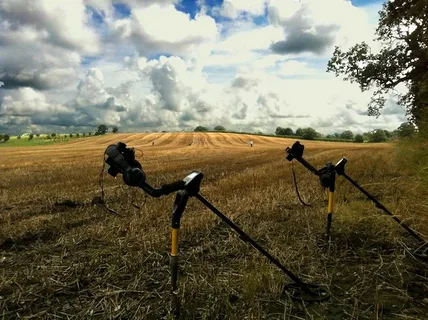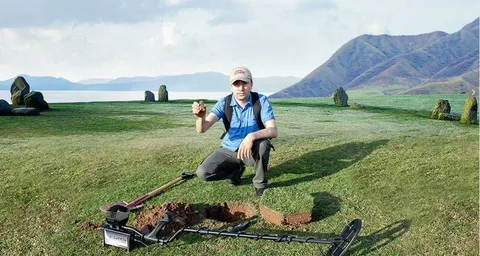Mining Company in USA Expands Operations Nationwide
The mining industry in the United States has seen significant growth in recent years, with some of the top companies in the country leading the way in expansion and development. One such company, known for its expertise and high-quality operations, is now making headlines for its nationwide expansion. With a strong track record in the industry, this top mining company is poised to make a significant impact on the national mining landscape. As it extends its reach across the country, the company is set to bring its expertise and resources to new regions, contributing to the growth and prosperity of the mining sector in the USA.
The expansion of the top mining company in the USA’s operations nationwide includes opening new mines in different states, increasing production capacity, and exploring new resource opportunities. The company’s expansion aims to solidify its position as a leading player in the mining industry and meet the growing demand for various raw materials both domestically and internationally. Additionally, the company’s expansion is expected to create new job opportunities and contribute to the economic development of the communities in which it operates.
The Rise of Mining Companies in the USA

The rise of mining companies in the USA can be attributed to the increasing demand for various minerals and resources such as coal, copper, and gold. These resources are essential for various industries, including construction, energy, and manufacturing. As technology continues to advance, the need for rare earth elements and other critical minerals has also driven the growth of mining companies in the country.
Additionally, the relaxation of regulations and policies surrounding mining activities in the USA has further incentivized the establishment and expansion of mining companies. The government’s support for domestic production and efforts to reduce reliance on imports has also contributed to the growth of the mining sector.
Furthermore, the USA is known to have significant mineral reserves, making it an attractive destination for mining investments. The development of advanced extraction techniques and the presence of a skilled workforce have further fueled the expansion of mining operations in the country.
Overall, the rise of mining companies in the USA is driven by a combination of growing demand for minerals, supportive government policies, abundant reserves, and technological advancements in the industry.
Challenges and Opportunities for Mining Companies in the USA

Challenges for mining companies in the USA include strict regulations and environmental concerns, potential scarcity of mineral resources, fluctuating commodity prices, and community opposition to new mining operations.
Opportunities for mining companies in the USA include technological advancements in extraction and exploration, such as the use of drones and automation, potential for increased demand for critical minerals used in clean energy technologies, and opportunities for partnerships and collaboration with local communities and governments.
Sustainable Practices in Mining Companies in the USA

Sustainable practices in mining companies in the USA include measures to minimize environmental impact, such as reducing water and energy usage, using innovative technology to lower emissions, and restoring land post-mining activities. Companies also focus on biodiversity conservation, improving safety and health standards for workers, and engaging with local communities to ensure responsible and ethical operations. Additionally, they may prioritize the use of renewable resources, recycle materials, and implement transparent reporting of their sustainability efforts. These initiatives aim to promote responsible resource extraction and contribute to the long-term well-being of the environment and communities.
The Impact of Mining Companies on Local Communities in the USA

Mining companies in the USA often have a significant impact on local communities. These impacts can include both positive and negative effects on the environment, economy, and social dynamics of the area.
Positive impacts may include job creation, economic growth, and infrastructure development. Additionally, mining companies may provide funding for community projects and support local businesses.
However, there are also negative impacts to consider. Mining activities can lead to environmental degradation, air and water pollution, and loss of natural habitats. Furthermore, the influx of workers and associated population growth can strain local resources and infrastructure.
To address these concerns, many mining companies are implementing sustainable practices and engaging with local communities to mitigate negative impacts and maximize benefits. Community engagement, environmental stewardship, and responsible resource extraction are becoming increasingly important considerations for mining companies operating in the USA.
Exploring the Future of Mining Companies in the USA
Exploring the future of mining companies in the USA involves examining how technological advancements, environmental regulations, and global market dynamics will impact the industry. This includes analyzing the potential for automation and digitalization, as well as the adoption of sustainable mining practices. Understanding these trends will be crucial for mining companies to adapt and thrive in the rapidly changing landscape of the industry. Additionally, exploring new opportunities for diversification and strategic partnerships will be important for mining companies to remain competitive in the future.
The Role of Technology in Modern Mining Companies in the USA
Modern mining companies in the USA utilize technology in various ways to improve efficiency, productivity, and safety. One of the key technologies used is automation, which allows for remote operation of equipment and machinery, reducing the need for workers to be physically present in hazardous areas. Additionally, advanced sensors and monitoring systems are employed to collect and analyze data on factors such as ore quality, equipment performance, and environmental conditions. This data is then used to make informed decisions and optimize processes. Furthermore, technologies such as drones and high-resolution imaging tools are used for exploration, surveying, and mapping of mining sites. Overall, technology plays a crucial role in modern mining operations, helping companies to overcome challenges and remain competitive in the industry.
Regulatory Framework for Mining Companies in the USA
See also: gold detector machine
The regulatory framework for mining companies in the USA is primarily established by the Mine Safety and Health Administration (MSHA) and the Environmental Protection Agency (EPA). MSHA sets and enforces safety and health regulations for mining operations, with a focus on ensuring safe working conditions for miners. The EPA oversees environmental regulations related to mining activities, including permits for air and water emissions, as well as managing the impact of mining on the surrounding ecosystems and communities. Additionally, mining companies may also be subject to state-level regulations and permitting processes, depending on the location of their operations. Overall, the regulatory framework for mining companies in the USA is aimed at balancing the needs of industry with the protection of workers and the environment.
Investing in Mining Companies in the USA: What You Need to Know
Investing in mining companies in the USA requires careful consideration of several factors. It’s essential to conduct thorough research on the company’s history, management team, financial performance, and potential risks. Additionally, understanding the regulatory environment, market conditions, and commodity prices is crucial. Investors should also assess the company’s long-term growth prospects and sustainability practices. Due diligence and consulting with financial advisors can help make well-informed investment decisions in the mining industry.
The Environmental Responsibility of Mining Companies in the USA
Mining companies in the USA have a significant environmental responsibility to mitigate the impact of their operations. This includes ensuring the proper management of waste, reducing pollution, and rehabilitating mining sites once they are no longer in use. The industry is regulated by federal and state laws, such as the Clean Water Act and the Surface Mining Control and Reclamation Act, which set strict environmental standards for mining activities. Companies are also increasingly incorporating sustainable practices into their operations, such as using renewable energy sources and implementing reforestation programs. Meeting these environmental responsibilities is crucial for the long-term sustainability of the mining industry and the protection of natural ecosystems.
Innovation and Adaptation in Mining Companies in the USA
Innovation and adaptation are essential for mining companies in the USA to remain competitive and sustainable in an ever-changing industry. These companies have been increasingly investing in technology and digitalization to improve operational efficiency, reduce costs, and minimize environmental impact.
Advancements in autonomous vehicles, drones, and sensors have allowed mining companies to optimize their processes and enhance safety. Additionally, the integration of data analytics and artificial intelligence has enabled better predictive maintenance, resource optimization, and real-time monitoring of operations.
Furthermore, mining companies have been adapting to the growing demand for sustainable practices by investing in renewable energy sources, such as solar and wind power, and implementing water recycling and waste management initiatives.
Innovation and adaptation in the mining industry have also led to the development of new extraction methods, such as in-situ mining and bioleaching, that minimize environmental disturbance and reduce the need for traditional open-pit mining.
Overall, innovation and adaptation have become crucial for mining companies in the USA to address challenges, such as declining ore grades, increased energy costs, and stricter regulations, while striving for long-term success in a competitive global market.










